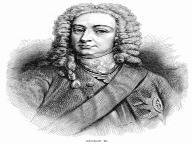Quiz Answer Key and Fun Facts
1. George Augustus Frederick, the eldest son of King George III and Queen Charlotte, was born at St James's Palace on 12 August 1762. Although he automatically became Duke of Cornwall at birth, he was made Prince of Wales by appointment. At what age did this occur?
2. In 1771, George began his education under the supervision of the Earl of Holderness, but where did this primarily take place?
3. In 1783, while suffering from an attack of gout, George was advised to take the sea air. He grew fond of the location that he visited, but where was it?
4. In 1784, George first encountered Maria Fitzherbert, seven years his senior and the granddaughter of a baronet, with whom George developed a romantic bond. In December 1785, the couple underwent a secret marriage ceremony, but why did this marriage prove illegal?
5. In the summer of 1788, the King displayed signs of mental deterioration, and the need for a regent became apparent. Although George was next in line to the throne, there was no law or precedent automatically appointing him as regent. Who advocated that George should become regent?
6. After George's initial marriage was declared null and void, the King sought a bride for his son. For what reason did George agree to marry Caroline of Brunswick?
7. George had a great interest in style and architecture, and, while he served as regent, he commissioned large scale building projects around London creating a new processional route. Which architect did George make responsible for bringing his vision to life?
8. George became king in January 1820 on the death of his father, having been regent for nine years to that point. His coronation took place on 19 July 1821, and was exceptionally lavish, costing £243,000. George undertook such an extravagant ceremony in order to outdo which European ruler's coronation?
9. In 1822, as a means of curbing increasing unrest north of the border, it was proposed that George should make a royal visit to Scotland. Who was tasked with organising the event?
10. George's last years saw him plagued with ill-health as a result of his excessive eating and drinking. What was his eventual cause of death?
Source: Author
Red_John
This quiz was reviewed by FunTrivia editor
bloomsby before going online.
Any errors found in FunTrivia content are routinely corrected through our feedback system.
